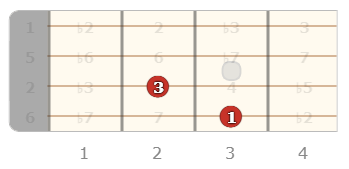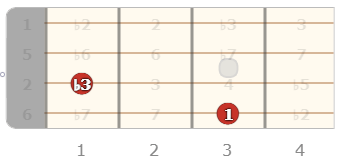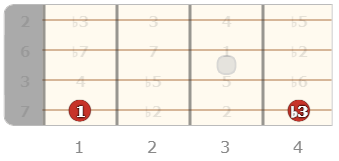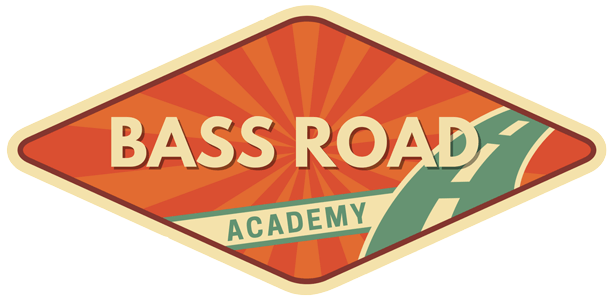How To Write A Bass Line: Connecting Chords
In this beginner lesson, I’m going to show you a step-by-step process you can use to write a bass line that smoothly connects chords.
The lesson is easy, perfect if you’re a beginner bass player or have never looked into composing bass lines before.

Let’s get started!
Step 1: Identify the chord progression
The first step is to figure out the chord progression.
In our case we have the following chord progression played by the band:
G – Em – C – D
By the way – that’s a powerful chord progression to have under your belt, you can literally play hundreds of songs with it.
Let’s check out the backing track chord progression chart now:

Step 2: Add root notes
In this step I want you to add root notes with a simple rhythm that fit the music track.
If you don’t know what a root note is or how to play different rhythms on bass, I recommend taking my Bass Guitar 101 course.

Step 3: Add Connecting Notes
At this point you have a nice bass line going, but you’re just playing root notes.
To make it more interesting, we need to find a way to connect chords with what I like to call transition notes.
These are notes that you play as a sort of connection between two different chords in a progression.
You use these notes as a bridge to:
- Make a smooth transition from one chord to another
- Make the bass line more interesting
So let’s do it now!
First, you need to look at the chords and plan the right note you use in the bass line composing to connect them.
In this chord progression, you have two types of chords: major chords and minor chords.
The formula for the transition notes:
- Major chords: play the major 3rd interval as a connecting note
- Minor chords: play the minor 3rd interval as a connecting note
Don’t worry if you don’t know theory or what intervals are, you can learn this mechanically for now.
Major 3rd diagram

Minor 3rd diagram – two common shapes


Add the connecting notes to the bass line, as the last note in the bar before the chord change happens.
The transition note needs to match up with the chord that is currently playing in the backing track.

Handy Resources For Download
To help you follow the material I’ve covered in this lesson, I’ve created a handy free package that includes PDF that summarizes everything in this lesson PLUS you get practice backing track so that you can play it on your computer or living room audio system and improvise over.DOWNLOAD LESSON RESOURCES PACK
Suggested Bass Courses
If you’re serious about bass and would enjoy step-by-step online bass lessons and courses, then I strongly suggest checking out how Bass Road Academy online bass courses can help you get results.
Check out my Walking Bass Fundamentals course to learn how to improvise effective bass lines in any style of music.
Wrap Up
As you can see composing bass lines is not difficult, you just need to have a little bit of strategy.
If you use this formula, you’ll always end up with a bass line that sounds good over any backing track.
This formula will help you how to write a bass line that always works, as it is based on outlining strong notes of chords.
If you enjoyed this lesson, please share it with your bass group.
Keep grooving,
Bogdan, Founder BassRoad.net
Want to get better at playing bass and make steady progress?
Level up your bass skills with online bass courses and lesson series at Bass Road Academy.
Learn why behind the bass lines you play, have a strategy when improvising and make progress faster.


